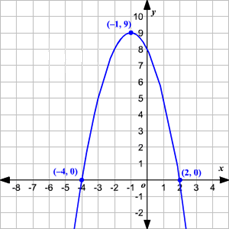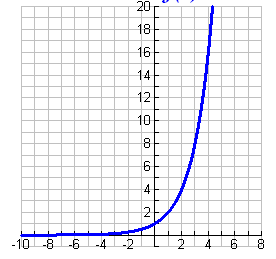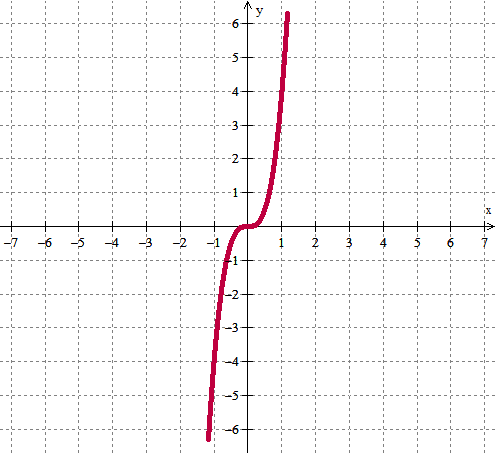MAT-HS.A-CED.02.a
|
MAT-HS Targeted Standards
(A) Concept: Algebra
(CED) Domain: Creating Expressions
Cluster: Create equations that describe numbers or relationships
MAT-HS.A-CED.02.a Create equations in two or more variables to represent relationships between quantities; graph equations on coordinate axes with labels and scales.
|
Student Learning Targets:
Knowledge Targets
Reasoning Targets
Skills (Performance) Targets
- I can create an equation in two or more variables to represent relationships between quantities.
- I can graph equations in two variables on a coordinate plane and label the axes and scales.
Product Targets
|
Proficiency Scale
| Score |
|
Description |
Sample Activity
|
| 4.0 |
In addition to achieving level 3.0 content, the student makes in-depth inferences and applications that go beyond what was taught including
- construct linear functions, including arithmetic and geometric sequences, given a graph, a description of a relationship, or two input-output pairs (A.F.LE.2)
|
- |
| |
3.5 |
In addition to Score 3.0 performance, the student demonstrates in-depth inferences and applications regarding the more complex content with partial success. |
| 3.0 |
The student can:
The student exhibits no major errors or omissions. |
Suppose $15 US is worth $150 Mexican pesos. What is an equation that relates US dollars x to Mexican pesos y?
The cost to rent a car is $50 plus $0.25 per mile driven. Write and graph an equation to represent the situation. |
| |
2.5 |
The student demonstrates no major errors or omissions regarding the simpler details and processes (Score 2.0 content) and partial knowledge of the more complex ideas and processes (Score 3.0 content). |
| 2.0 |
There are no major errors or omissions regarding the simpler details and processes as the student:
linear
However, the student exhibits major errors or omissions regarding the more complex ideas and processes. |
- |
| |
1.5 |
The student demonstrates partial knowledge of the simpler details and processes (Score 2.0 content) but exhibits major errors or omissions regarding the more complex ideas and procedures (Score 3.0 content). |
| 1.0 |
With help, a partial understanding of some of the simpler details and processes and some of the more complex ideas and processes. |
- |
| |
0.5 |
With help, the student demonstrates a partial understanding of some of the simpler details and processes (Score 2.0 content) but not the more complex ideas and processes (Score 3.0 content). |
Alg II Create and Graph Quadratic Functions Proficiency Scale
| Score |
|
Description |
Sample Activity
|
|
4.0
(advanced)
|
In addition to Score 3.0, the student demonstrates in-depth inferences and applications regarding more complex material that go beyond end of instruction expectations. |
Given two parabolic graphs, create the equations for both functions, graph them, and describe the similarities and differences.
Function 1: the turning point is (2,-3) and another random point on the graph is (4,5)
Function 2: the turning point is (2,-3) and another random point on the graph is (5,6)
|
| |
3.5 |
In addition to Score 3.0 performance, the student demonstrates in-depth inferences and applications regarding the more complex content with partial success. |
|
3.0
(proficient)
|
The student can:
- create quadratic equations in two variables given information about the function.
The student exhibits no major errors or omissions. |
Given the x-intercepts of 6 and -2, write a quadratic function that would also pass through the point (1,5).
|
| |
2.5 |
The student demonstrates no major errors or omissions regarding the simpler details and processes (Score 2.0 content) and partial knowledge of the more complex ideas and processes (Score 3.0 content). |
|
2.0
(progressing)
|
There are no major errors or omissions regarding the simpler details and processes as the student can:
However, the student exhibits major errors or omissions regarding the more complex ideas and processes.
|
Given the graph below, write the quadratic function.

|
| |
1.5 |
The student demonstrates partial knowledge of the simpler details and processes (Score 2.0 content) but exhibits major errors or omissions regarding the more complex ideas and procedures (Score 3.0 content). |
|
1.0
(beginning)
|
With help, the student demonstrates a partial understanding of some of the simpler details and processes (Score 2.0 content) and some of the more complex ideas and processes (Score 3.0 content). |
|
| |
0.5 |
With help, the student demonstrates a partial understanding of some of the simpler details and processes (Score 2.0 content) but not the more complex ideas and processes (Score 3.0 content). |
| 0.0 |
Even with help, the student demonstrates no understanding or skill. |
|
Alg II Create and Graph Exponential Functions Proficiency Scale
| Score |
|
Description |
Sample Activity
|
|
4.0
(advanced)
|
In addition to Score 3.0, the student demonstrates in-depth inferences and applications regarding more complex material that go beyond end of instruction expectations. |
Given two exponential graphs, create the equations for both functions, graph them, and describe the similarities and differences.
Function 1: contains the point (0, 4) and (1, 12)
Function 2: contains the point (0, 4) and (1, 2)
|
| |
3.5 |
In addition to Score 3.0 performance, the student demonstrates in-depth inferences and applications regarding the more complex content with partial success. |
|
3.0
(proficient)
|
The student can:
- create exponential equations in two variables given information about the function.
The student exhibits no major errors or omissions. |
Given the points (0, 3) and (-1, 6), create the exponential equation.
|
| |
2.5 |
The student demonstrates no major errors or omissions regarding the simpler details and processes (Score 2.0 content) and partial knowledge of the more complex ideas and processes (Score 3.0 content). |
|
2.0
(progressing)
|
There are no major errors or omissions regarding the simpler details and processes as the student can:
- recognize and recall specific terminology such as:
- identify the graph and/or equation of exponential functions in two variables on a coordinate plane and label the axes and scales.
However, the student exhibits major errors or omissions regarding the more complex ideas and processes.
|
Given the graph below, write the exponential function.

|
| |
1.5 |
The student demonstrates partial knowledge of the simpler details and processes (Score 2.0 content) but exhibits major errors or omissions regarding the more complex ideas and procedures (Score 3.0 content). |
|
1.0
(beginning)
|
With help, the student demonstrates a partial understanding of some of the simpler details and processes (Score 2.0 content) and some of the more complex ideas and processes (Score 3.0 content). |
- |
| |
0.5 |
With help, the student demonstrates a partial understanding of some of the simpler details and processes (Score 2.0 content) but not the more complex ideas and processes (Score 3.0 content). |
| 0.0 |
Even with help, the student demonstrates no understanding or skill. |
- |
Alg II Create and Graph Polynomial Functions Proficiency Scale
| Score |
|
Description |
Sample Activity
|
|
4.0
(advanced)
|
In addition to Score 3.0, the student demonstrates in-depth inferences and applications regarding more complex material that go beyond end of instruction expectations. |
Given two polynomial graphs, create the equations for both functions, graph them, and describe the similarities and differences.
Function 1: the zeros are 1, 2, 3, and another random point on the graph is (0,-6)
Function 2: the zeros are 1, 2,3, and another random point on the graph is (0,18)
|
| |
3.5 |
In addition to Score 3.0 performance, the student demonstrates in-depth inferences and applications regarding the more complex content with partial success. |
|
3.0
(proficient)
|
The student can:
- create polynomial equations in two variables on a coordinate plane and label the axes and scales.
The student exhibits no major errors or omissions. |
Given the x-intercepts of -4, -1 and 2, write a polynomial function that would also pass through the point (0,-2).
|
| |
2.5 |
The student demonstrates no major errors or omissions regarding the simpler details and processes (Score 2.0 content) and partial knowledge of the more complex ideas and processes (Score 3.0 content). |
|
2.0
(progressing)
|
There are no major errors or omissions regarding the simpler details and processes as the student can:
- recognize and recall specific terminology such as:
- identify the graph and/or equation of polynomial functions in two variables on a coordinate plane and label the axes and scales.
However, the student exhibits major errors or omissions regarding the more complex ideas and processes.
|
Given the graph below, write the polynomial function.

|
| |
1.5 |
The student demonstrates partial knowledge of the simpler details and processes (Score 2.0 content) but exhibits major errors or omissions regarding the more complex ideas and procedures (Score 3.0 content). |
|
1.0
(beginning)
|
With help, the student demonstrates a partial understanding of some of the simpler details and processes (Score 2.0 content) and some of the more complex ideas and processes (Score 3.0 content). |
- |
| |
0.5 |
With help, the student demonstrates a partial understanding of some of the simpler details and processes (Score 2.0 content) but not the more complex ideas and processes (Score 3.0 content). |
| 0.0 |
Even with help, the student demonstrates no understanding or skill. |
- |
Resources
|

